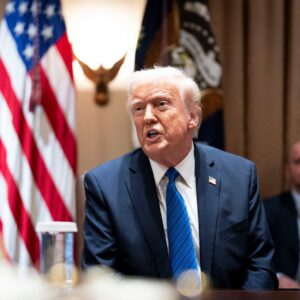
Washington, D.C. – March 26, 2025
As the United States barrels toward April 2, dubbed “Liberation Day in America” by President Donald Trump, a wave of economic uncertainty is gripping the nation. The administration’s latest tariff policies, including a looming 25% tariff on countries purchasing oil and gas from Venezuela, have sent shockwaves through global markets and ignited fierce debate at home. With just days until the policy takes effect, businesses, consumers, and international allies are bracing for impact.
The Venezuela tariff, announced earlier this month, is part of a broader trade strategy that has already seen 25% tariffs imposed on Canada and Mexico—though a temporary pause was granted for goods compliant with the United States-Mexico-Canada Agreement (USMCA) until April 2. Meanwhile, China faces an additional 20% tariff layered atop existing duties, prompting retaliatory 15% duties on U.S. farm goods like chicken and pork, which took effect on March 10. These escalating trade measures have fueled fears of inflation, disrupted supply chains, and clouded the economic outlook for 2025.
U.S. business activity showed resilience in March, with a modest uptick reported this week, but analysts warn that the tariff storm could soon overshadow these gains. Consumer confidence has plummeted to its lowest level in over four years, dropping to 92.9 in March, according to a recent survey. Households are increasingly pessimistic, citing rising costs and recession risks tied to the trade policies. “Consumers were already due for a cooldown, but these tariffs raise the risk of a sharper pullback,” said Stephen Stanley, chief U.S. economist at a leading financial firm.
The ripple effects are being felt beyond U.S. borders. Canada’s Prime Minister Mark Carney, sworn in on March 14, called for a snap election next month to address what he described as “twin threats of tariffs and annexation” from the Trump administration. In a fiery speech on Sunday, Carney accused the U.S. of strong-arming its neighbors, signaling a potential shift in North American relations.
On Wall Street, stocks ended higher on Tuesday, buoyed by gains in companies like Apple, but the S&P 500 remains down 2% for the year—its first quarterly loss since June 2023. Ratings agency Moody’s warned this week that the U.S.’s fiscal strength is on a multiyear decline, with widening deficits and rising debt costs exacerbated by the tariff-driven economic strain.
Critics of the policy argue that the tariffs will hit American consumers hardest, driving up prices for everyday goods. “Go to the grocery store and see for yourself,” quipped a National Economic Council director this week, dismissing concerns over egg prices in a tense exchange with reporters. Supporters, however, hail the measures as a bold step to protect American interests and punish nations aligned with adversaries like Venezuela.
As “Liberation Day” nears, the Trump administration shows no signs of backing down. The president doubled down on his rhetoric in a statement yesterday, framing the tariffs as a cornerstone of his vision for economic independence. Yet, with consumer sentiment souring and international tensions rising, the question remains: will this gamble liberate the U.S. economy—or plunge it into deeper uncertainty? For now, the nation watches and waits.